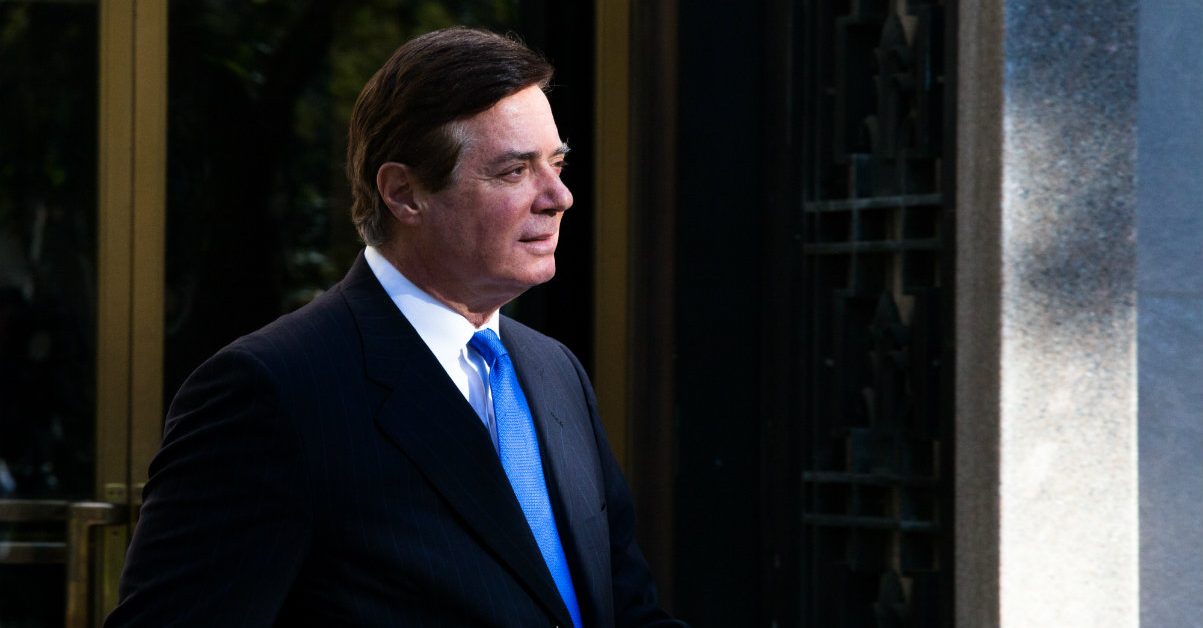
Proceedings remained under seal for most of the morning in the government’s case against Paul Manafort on charges of bank fraud and tax evasion in the Eastern District of Virginia. When open court finally resumed, the defense quickly rested their case.
Manafort’s attorneys entered the courtroom first–taking their seats at 11:35 a.m. The prosecution followed, entering the courtroom and standing up around their seats by 11:37 a.m.
Reporters kept busy and furiously scribbled as nothing much happened. Manafort himself entered the court at exactly 11:39 a.m. The defendant mouthed a quick piece, shook hands with his attorneys and promptly sat down.
Typically talkative courtroom observers–public and press alike–were drawn to a reasonable facsimile of silence on Tuesday. Coughs, paper rustling and door sounds only occasionally gave way to the most timid whispers so far.
Outside the hushed and imposing confines of the courtroom, however, bathroom and hallway discussions pondered the possibility of a guilty plea at the last minute. Maybe that’s what everyone had been waiting for; maybe that’s why such a long sealed hearing over Monday’s sealed motion–a motion Judge T.S. Ellis III had promised would eventually be unsealed.
No plea was in the offing.
Judge Ellis took the stand at 11:42 a.m. and asked for arguments regarding the defense’s Rule 29 motions under the Federal Rules of Criminal Procedure.
Defense attorney Richard Westling made his case. To wit, “the lending arrangement” between Manafort and the Federal Savings Bank (FSB) was in the bag and no one at the bank relied on any alleged misrepresentations when deciding to issue the loan in question.
Westling said, “We believe the evidence has shown Federal Savings Banks was aware of Paul Manafort’s assets…at the time they made the decision to lend.” Perhaps surprisingly, Westling then approvingly cited the nature of Manafort’s relationship to FSB CEO Steve Calk in support of the motion. He noted, without explicitly discussing the apparent quid pro quo, “Mr. Calk’s position as a CEO and shareholder.”
Then Westling sat down.
Assistant U.S. Attorney Uzo Asonye took the lectern and argued against the motion on the basis of four distinct points. His task was to prove the alleged misrepresentations were, in fact, material.
Asonye claimed: (1) the alleged false representations had potential to be capable of influencing the bank and this was the case law on point; (2) “Steve Calk is not the bank…there were four other victims” of the bad loan; (3) the standard for materiality was a reasonable lender and not a “renegade lender”; and (4) the government had presented evidence connecting this one discrete loan issue to the broader conspiracy alleged.
After a brief back-and-forth on case law, Judge Ellis said the defense had a good argument that there was no material connection between any alleged misrepresentations and the bank’s decision to grant the loan. Ellis said, “In the end, I think the defendant has made a significant argument about materiality.” But in the end end, however, this argument was good enough for the jury to hear, too.
Judge Ellis ruled against all defense motions to dismiss. The request for acquittal was denied.
Reporters scrambled out to file their stories–to Judge Ellis’ voiced amusement. “Does anybody else need to leave?” They did.
Paul Manafort spoke and declined to testify. The defense rested their case.
Closing arguments will be heard on Wednesday.
[image via Keith Lane and Getty Images]